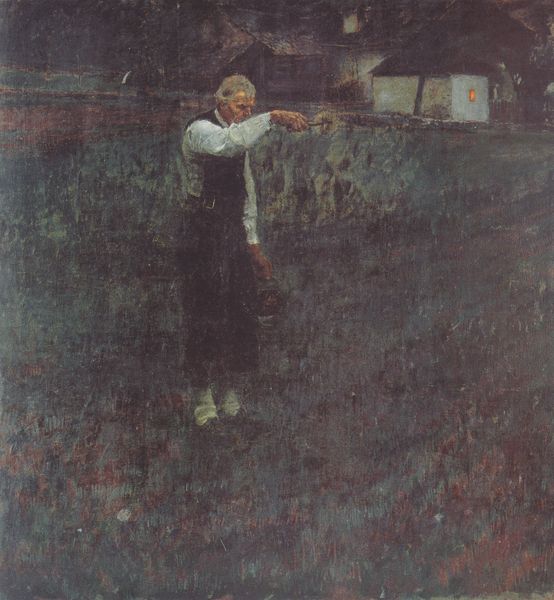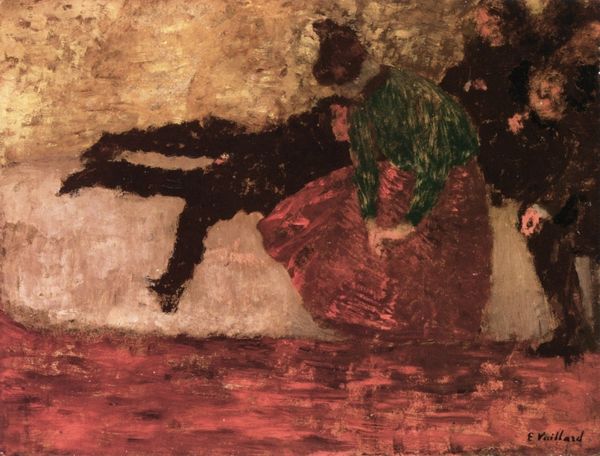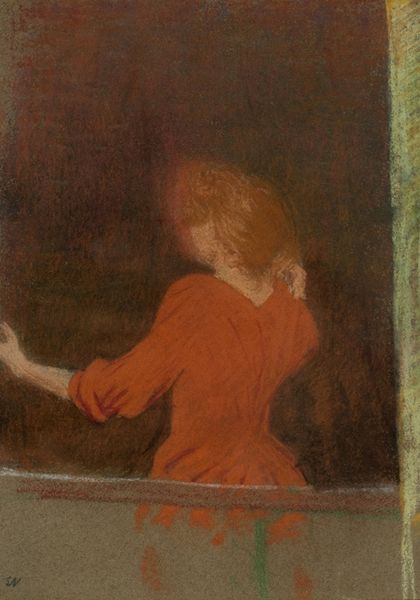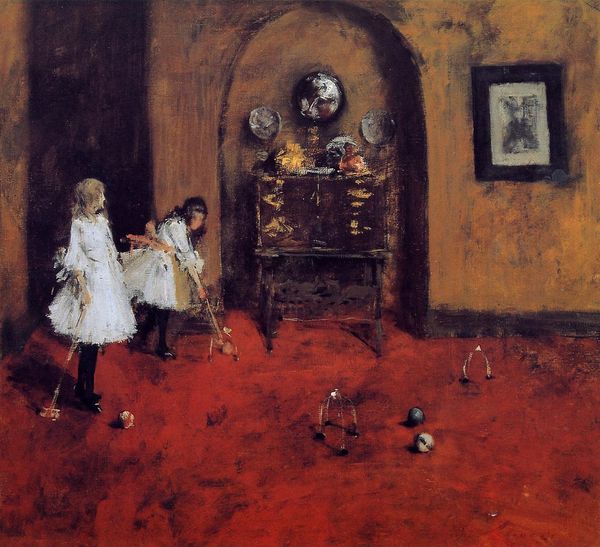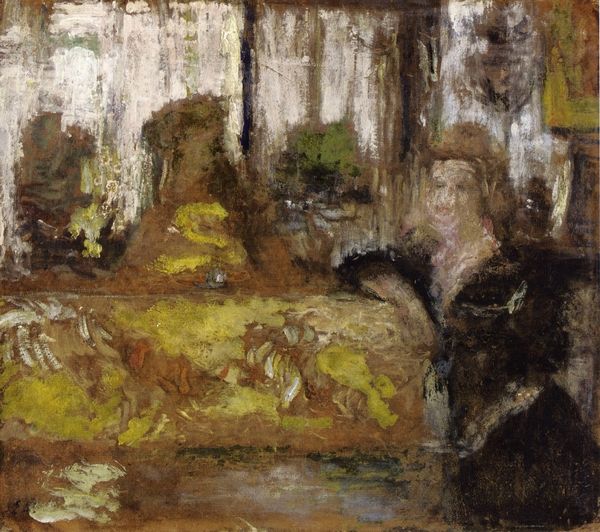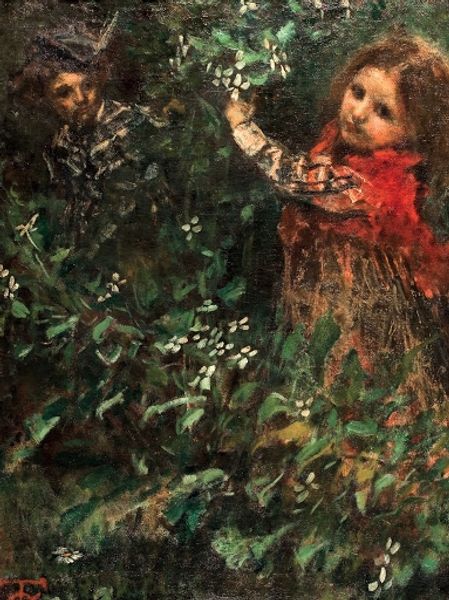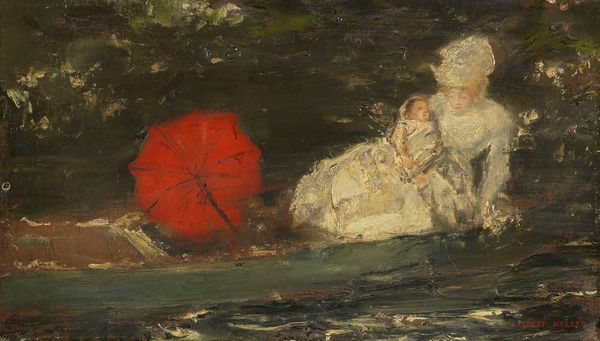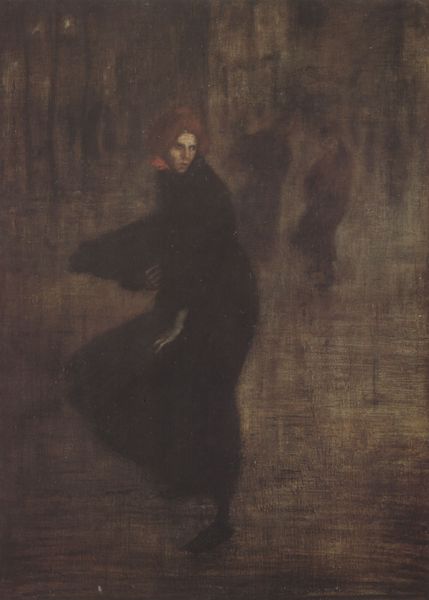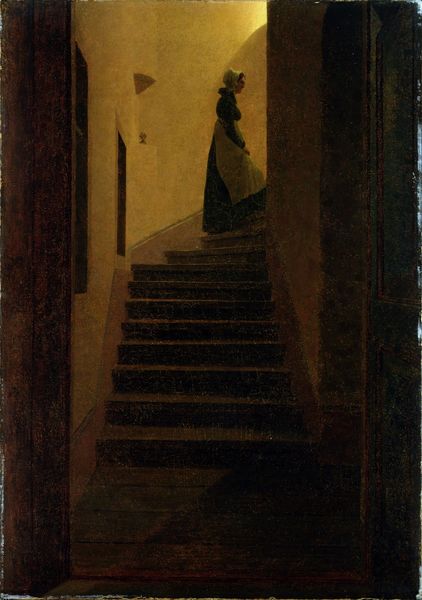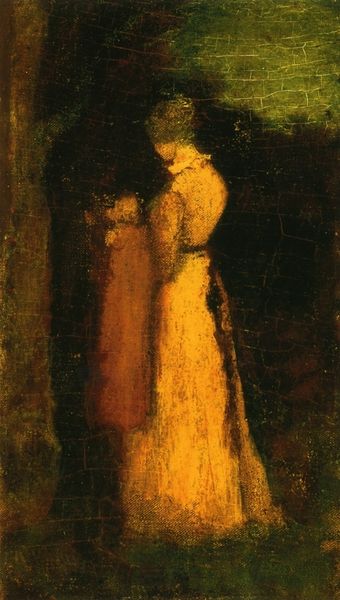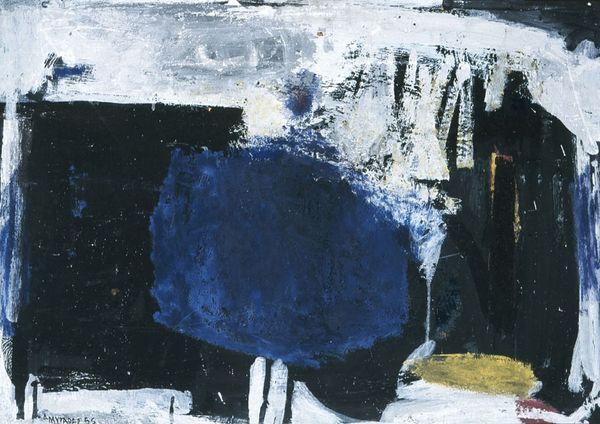
painting, oil-paint, impasto
#
portrait
#
painting
#
impressionism
#
oil-paint
#
figuration
#
oil painting
#
impasto
#
genre-painting
Copyright: Public Domain: Artvee
Editor: Here we have "Hide and Seek," an oil painting by William Merritt Chase. I find the painting rather intriguing, particularly the contrast between the foreground figure bathed in softer light and the background figure near the darker wall. How do you interpret this work, looking at the structural aspects? Curator: The dynamism within Chase's composition rests primarily upon oppositions, certainly, but also within a kind of mirrored space. Observe the reverberating diagonals that organize the recession of space. One notes how the foregrounded figure directs our gaze toward the brighter form in the back. Are we, as viewers, positioned as hiders or seekers, do you think? Editor: That's a wonderful point. I didn't think about how we as viewers were meant to be involved in their game. To me, though, what really catches my eye is the surface, how he’s clearly using impasto, and I want to know more about how the application of oil paint influences the painting overall? Curator: Note how the thicker applications of paint appear where light strikes most vividly. Consider the conceptual implications of these impasto areas: are they moments of ‘truth’ or of heightened artificiality? Also consider that the darker portions of the work display a much flatter surface texture overall; are they true shadows or more akin to negative spaces formally? Editor: This emphasis on surface quality is revealing; now I wonder how it adds to the dialogue within the pictorial space, and, in relation, our role as the viewer. It’s so different from my initial read. Curator: Exactly! It invites viewers to become participants. The beauty of art lies in its ability to question perceptions!
Comments
No comments
Be the first to comment and join the conversation on the ultimate creative platform.


